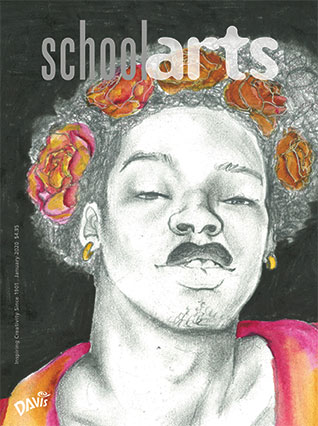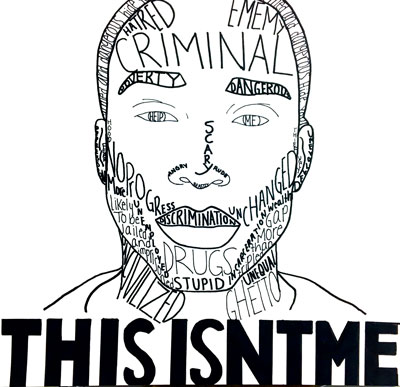 |
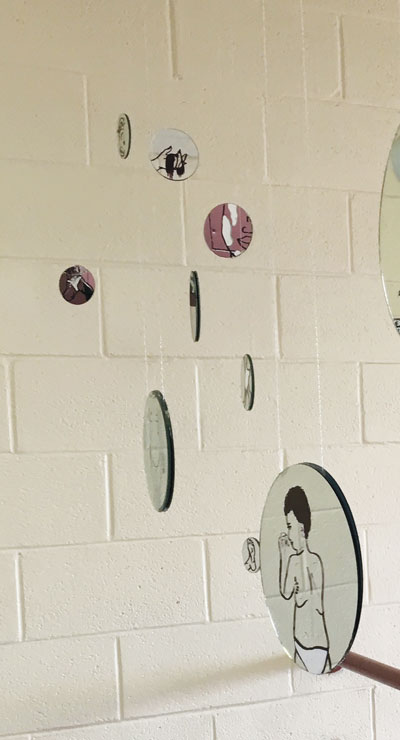 |
| Top: Asheigh Aulet, This Isn’t Me, 2018. Bottom: Jenna Hart, Luci Lobo, and Charlotte Weiss. |
Sympathy is not empathy, as Brené Brown has pointed out in her TED Talks, and often the assignments we share as educators stop short of empathy by asking students to feel sorry or advocate for a group of people as they create a poster of some sort. I propose that students build on vulnerability by making work that comes from a more personal place than simply scanning the news for important issues. Students can create work that starts with direct experience, a volunteer experience, or through the act of face-to-face interviews, and thus develop the ability to understand and share the feelings of others.
Direct Experience
Too many students have experience with bullying. Some have had to step in and provide protection for another individual. It seems natural to ask students to think back on their own experiences in and out of school. Who can they empathize with as a result of their own personal biographies? Have there been instances when they have had to stand up for someone? This kind of experience can allow students to create work that builds on the empathy they have for that person or persons.
To this end, challenge students to create a sixty-second public service announcement or billboard design that not only highlights the issue at hand, but also provides information indicating that, to the artist, it’s personal. Many students can shoot and edit films with their own phones and billboard designs can be designed in a variety of ways—from works that originate in a sketchbook to computer graphics that can be shared through a variety of platforms.
Volunteer Experiences
If a teacher wants to take this idea of direct experience even further, suggest that students volunteer with a group they sympathize with. Ask them to identify a group of people they want to help in some way, then ask them to research local nonprofit organizations that serve these people in different ways. Over the course of a week or a month, students can volunteer at these organizations and keep a visual journal to share at the end of the unit.
Visual journals can include images and writing that anticipates what the experience will be like before starting, what the experience is like on a day-to-day basis, and the kinds of changes in thinking the experience inspired in them. How can students build on their volunteer experience and development of empathy to make the experience a more consistent part of their lives?
Interviewing
Finally, interviewing someone in person about their experiences can lead to empathy in a way that reading an article or watching a video can’t. Students can interview their family, friends, community members, or even local officials about specific times when they went from sympathy to empathy.
Students can conduct the interview with a recording device. After concluding the interview, students could create an installation featuring the element of sound for viewers to experience the words firsthand from those most affected by it. Students can also pair up, and one student can act as the interviewer and the other can act as a sound engineer.
Artists and Resources
Three artists featured in Season 9 of Art21: Art in the Twenty-First Century can help us with teaching about empathy through direct experience, volunteering with organizations, and interviewing:
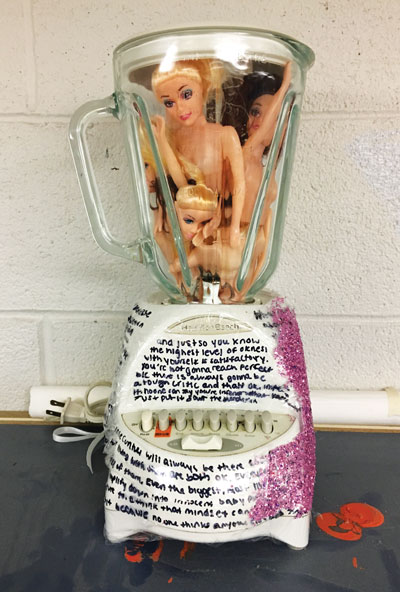 |
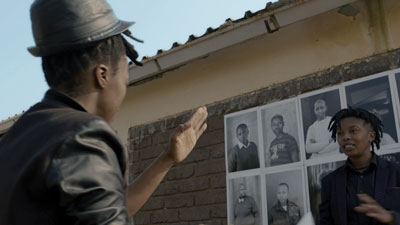 |
| Top: Hayden DeCamp, untitled, 2018. This sculpture is about not reaching for perfection, but instead being comfortable with who you are, how you look, and how you feel. Bottom: Production still from the Art21: Art in the Twentry-First Century season nine episode, “Johannesburg.” © Art21, Inc. 2018. |
Zanele Muholi, a photographer and visual activist, creates self-portraits and photographs of black lesbian, gay, bisexual, transgender, and intersex people living in South Africa. As a member of the LGBTI community in South Africa, Muholi creates work that starts with firsthand experience.
Katy Grannan, a San Francisco Bay area photographer, utilizes conversation and the building of relationships to develop empathy as she photographs her collaborators over time. Grannan doesn’t formally interview her subjects and uses conversation as a way to learn about those she photographs.
Creative Growth Art Center in Oakland, California, serves adult artists with developmental, mental, and physical disabilities, providing studio space and materials for artistic development, gallery exhibition, and representation. After viewing the Creative Growth segment on art21.org, students can think about where they might like to volunteer locally.
Summary
Let’s face it, students who make artwork about gun violence, bullying, or even something like the hazards of vaping, are often only scratching the surface and not necessarily experiencing empathy for the people most affected by these issues. Incorporating a thoughtful approach that draws on direct experience, volunteering, and/or the act of interviewing someone, students can think about their own lives and learn about the lives of others firsthand to create works of art that explore empathy more authentically.
Joe Fusaro is the visual arts chair for Nyack Public Schools in New York and senior education advisor for Art21: Art in the Twenty-First Century. Fusaro also serves as a member of the adjunct faculty for New York University’s Department of Art and Arts Professions. joefusaro@ optonline.net
WEB LINK
Art21: www.art21.org
View this article in the digital edition.
